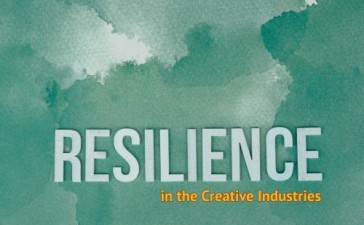In the realm of organizational success, particularly within creative industries, the recipe for excellence extends beyond mere talent. While individual skill and creativity are foundational, the true magic happens when these qualities are nurtured and amplified through a conducive environment. A great creative organization understands that fostering innovation and nurturing talent requires a thoughtful blend of ingredients. Let’s explore the six key components that contribute to the success of such organizations: Diverse Talent, Open Communication, Freedom to Experiment, Clear Vision and Goals, Supportive Environment, and Adaptability and Flexibility.
- Diverse Talent: Fueling Innovation Through Variety
One of the cornerstones of a great creative organization is its ability to attract and harness diverse talent. Diversity goes beyond surface-level differences; it encompasses a range of backgrounds, perspectives, and skills. For instance, a design studio that brings together graphic artists, UX/UI designers, and industrial designers not only broadens its creative toolkit but also enhances its problem-solving capabilities. This diversity sparks innovation by challenging conventional thinking and fostering a culture of inclusion where every voice is valued.
2. Open Communication: Cultivating Collaboration
Effective communication lies at the heart of collaboration and creativity. A great creative organization cultivates an environment where ideas flow freely and feedback is encouraged. This open dialogue allows team members to share insights, brainstorm solutions, and refine concepts collectively. For example, regular team meetings, brainstorming sessions, and digital platforms for idea-sharing ensure that everyone feels empowered to contribute their perspectives and expertise.
3. Freedom to Experiment: Nurturing Innovation
Creativity thrives in an environment that encourages experimentation and risk-taking. A great creative organization provides its teams with the freedom to explore new ideas and approaches without the fear of failure. This freedom is essential for pushing boundaries and discovering innovative solutions. For instance, Google’s famous “20% time” policy allows employees to dedicate a portion of their working hours to personal projects, which has led to groundbreaking innovations like Gmail and Google Maps.
4. Clear Vision and Goals: Guiding Purposeful Creativity
Clarity of vision and well-defined goals provide a roadmap for creative endeavors within an organization. They align individual efforts with collective objectives, ensuring that creativity is directed towards meaningful outcomes. For example, Pixar Animation Studios is known for its commitment to storytelling excellence, which guides every aspect of their creative process from concept development to final production. This clarity fosters cohesion and inspires teams to channel their creativity towards achieving shared goals.
5. Supportive Environment: Nurturing Talent and Morale
A supportive environment is essential for cultivating creativity and nurturing talent. It’s about creating a culture where individuals feel valued, respected, and empowered to grow. This support can take many forms, from mentorship programs and skills development workshops to recognition of achievements and work-life balance initiatives. For example, companies like Adobe prioritize employee well-being through initiatives like wellness programs and flexible work arrangements, which contribute to higher morale and creativity among their teams.
6. Adaptability and Flexibility: Embracing Change
In today’s fast-paced world, adaptability is key to staying relevant and innovative. A great creative organization embraces change and is agile in responding to new challenges and opportunities. This flexibility allows teams to pivot strategies, adopt emerging technologies, and explore new markets. For example, during the COVID-19 pandemic, many creative organizations shifted to remote work seamlessly, leveraging digital tools and virtual collaboration platforms to maintain productivity and creativity.
Conclusion: Cultivating Creativity and Innovation
In conclusion, a great creative org. anization blends these six key ingredients—Diverse Talent, Open Communication, Freedom to Experiment, Clear Vision and Goals, Supportive Environment, and Adaptability and Flexibility—to cultivate a culture where creativity and innovation thrive. By nurturing diverse talent, fostering open communication, encouraging experimentation, aligning efforts with clear goals, providing a supportive environment, and embracing adaptability, organizations can unlock their full creative potential and achieve sustainable success in an ever-evolving landscape. As we look to the future, these principles will continue to guide organizations in fostering creativity, driving innovation, and making a meaningful impact on the world around them.
Want to learn more? We’re here to help you to take action, just like we’ve helped thousands of other entrepreneurs, business owners, and creative professionals all around the globe. Now is the time to let your passion SHINE. Now is the time to Make Tomorrow Today! To your success, Vinh Van Lam and Stuart Horrex Cofounders
ArtSHINE.com





